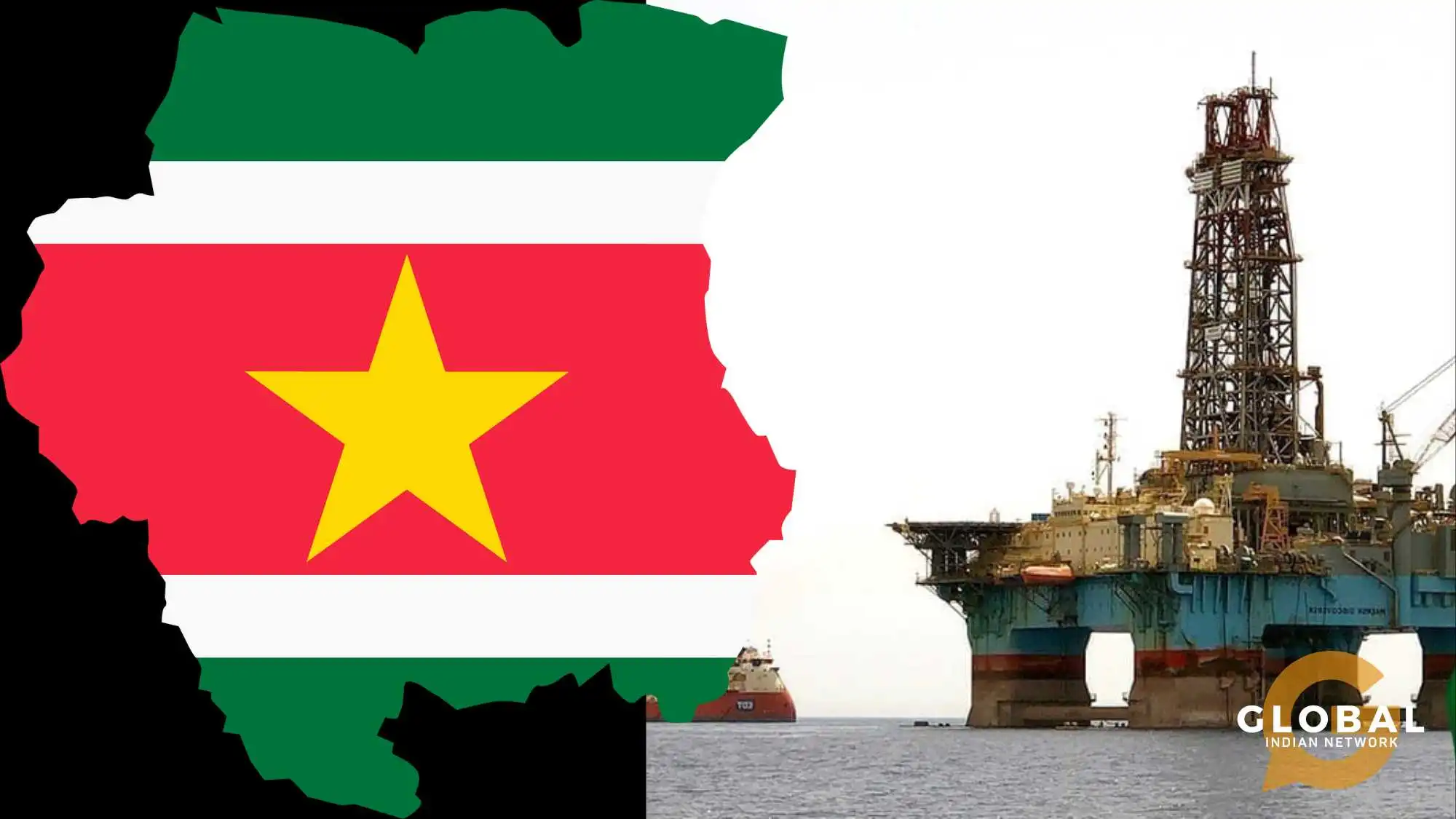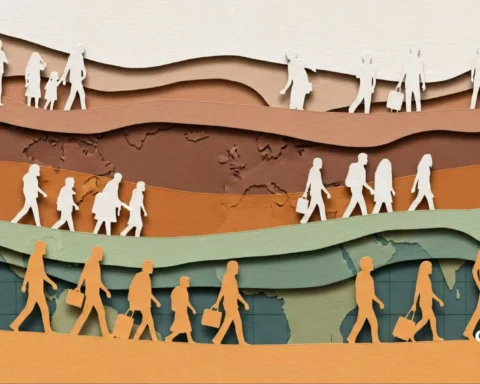Suriname, located on South America’s northeastern coast, is a hidden jewel noted for its diverse cultures and magnificent natural beauty. This small but unique country, bordering by the Atlantic Ocean to the north, welcomes visitors to meander through beautiful jungles, where unusual fauna may be heard beneath towering trees. Paramaribo, the capital, has a wonderful combination of colonial architecture and modern energy.
The nation has a highly ethnically diverse population of South Asians, Creoles, Javanese, African, Chinese, Indian, and Dutch descent. Suriname‘s economy relies on its plentiful natural resources, such as gold and bauxite, and its residents live in harmony with their cultures and customs.
When treasures are discovered, a nation’s destiny can change drastically. Suriname has such a story to tell. The government under President Santokhi is geared to exploring unchartered territory.
Table of Contents
The New-Found Treasure
Suriname has recently gained attention for significant oil discoveries in its offshore waters, particularly in the Guyana-Suriname basin. Companies like ExxonMobil and PETRONAS have announced promising hydrocarbon finds, which could position Suriname as a burgeoning oil province.
Created with AI for illustration purposes
Challenges remain, with forecasts suggesting that the full potential of these discoveries may not be realized until around 2027, contingent on further exploration and development efforts. Under the surface of this economic prosperity lies a complex terrain of socioeconomic gaps that have hindered the bulk of the people from fully using the country’s natural resources. Let us understand the nuances.

Current Economic and Poverty Landscape
Suriname’s economy heavily relies on extractive industries, with oil and gold accounting for 85% of exports and 27% of government revenues, according to the World Bank. The Suriname Poverty and Equity Assessment reveals a 17.5% national poverty rate, with 1.1% living in extreme poverty on less than $2.15 daily (2024), emphasizing the need for poverty alleviation policies. The report reveals that historical inequities are causing poverty and inequality in Suriname, with over one in four interior Surinamese living below the upper-middle-income line, indicating that oil wealth may not benefit all regions equally.
Suriname’s economy has been impacted by a financial crisis, inflation, and external debts, exacerbated by the COVID-19 pandemic, leading to job losses and increased poverty, making the pursuit for socio-economic parity even more urgent.
Some forecasts for 2024 may open up the scenario and provide more clarity. The unemployment rate in Suriname is forecast to 10.30%, unemployed people in Suriname is forecast to 26.88k, employment rate in Suriname is forecast to 54.82% , and the total labor force in Suriname is forecast to 261k.
Socio-Economic Disparities: A Multi-Faceted Issue
Suriname’s diverse population, including East Indian, African, Javanese, Indigenous, and European, is a source of pride but also contributes to socio-economic and ethnic segregation, with unequal access to education, employment, and political power.
A study on ethnic disparities in childbirth outcomes found that certain ethnic groups in Suriname experience significantly worse health outcomes, which reflects broader inequalities in access to healthcare, education, and social services. These disparities are particularly pronounced in rural areas, where infrastructure and public services are often inadequate.
Suriname’s education system is characterized by significant inequalities, especially in rural areas like Sipaliwini. Children in rural areas face barriers like limited access to qualified teachers and inadequate facilities, leading to lower primary school completion rates, with only 61.7% of rural children completing school.

Addressing Structural Challenges
To achieve socio-economic parity, Suriname must address several structural challenges:
Diversifying the Economy: Suriname’s over-reliance on extractive industries makes it vulnerable to global price fluctuations. Despite the potential of agriculture, tourism, and renewable energy, these sectors are underdeveloped. Diversifying the economy would create stable job opportunities and reduce population vulnerability.
Improving Education and Healthcare: To reduce inequality, Suriname needs to improve access to quality education and healthcare. Despite increasing school enrollment, there are still significant gaps in educational outcomes, especially in rural areas. Expanding and improving healthcare services is also crucial for all citizens, regardless of ethnicity or location.
Strengthening Social Safety Nets: Suriname’s social safety net is inadequate for vulnerable citizens, and expanding programs like unemployment benefits, healthcare subsidies, and housing assistance could alleviate poverty and protect those affected by economic downturns.
Tackling Corruption and Governance Issues: Suriname faces a significant challenge to socio-economic parity due to corruption and weak governance structures. Mismanagement of public funds and opaque business dealings in the extractive sector have squandered resources for public services and infrastructure development. Strengthening anti-corruption measures and increasing transparency in government spending is crucial for ensuring the wealth generated benefits all citizens.
Promoting Ethnic and Gender Equality: The intersection of ethnic and socio-economic inequality in Suriname requires targeted policies to reduce discrimination and promote inclusion, including investing in marginalized communities, ensuring equal access to education and job opportunities, and addressing cultural barriers.

Role of External Support and International Partnerships
Suriname’s journey to socioeconomic parity does not have to be travelled alone. International institutions, such as the European Union and the World Bank, have contributed financial and technical aid to help the country overcome its development issues. For example, the EU’s Multi-annual Indicative Program (MIP) has identified areas for development in Suriname, with an emphasis on decreasing deforestation, supporting sustainable agriculture, and strengthening governance institutions.
Created with AI for illustration purposes
Stronger regional integration can benefit Suriname, allowing it to tap into new markets, develop infrastructure, and share best practices in governance and economic management. This could lead to new opportunities for trade, investment, and collaboration on climate change and sustainable development.
Can Suriname Achieve Socio-Economic Parity?
Despite the daunting task, Suriname’s socio-economic parity is achievable due to its abundant natural resources and small population. Targeted policies can help in a big way. To address the persistent structural inequalities in the country, all sectors must work together. The government should diversify the economy, invest in education and healthcare, and strengthen social safety nets, while civil society should hold leaders accountable and advocate for marginalized communities’ rights.
International support is crucial for Suriname’s development, but it’s not enough. Leaders must demonstrate political will to combat corruption, promote inclusion, and ensure equitable economic growth benefits are shared across all societal segments despite external aid alone.
Suriname, despite facing significant obstacles in achieving socio-economic parity, has the potential to overcome these challenges through strong leadership, inclusive policies, and international cooperation, despite the long and challenging journey towards a more just and equitable society. The current administration under President Santokhi has taken necessary steps to empower its citizens. The commitment needs to continue in the coming years to stabilise the socio-economic fabric which forms the essence of the nation.
Explore Our Archive of Surname-related Articles:
- Dilip Sardjoe: The Business Socialist Who Shaped Suriname’s Economy and Politics
- Celebrating Powerful Women of Suriname: Figures Who Are Making a Difference
- Strengthening Financial Integrity: The Santokhi Administration’s AML/CFT Initiatives in Suriname
- Overview of Suriname’s AML/CFT Measures and Key Findings
- How Globalization is Shaping Business Culture in Suriname
- AML/CFT in Suriname: Challenges Faced by Financial Intelligence and Investigative Systems under President Santokhi
- AML/CFT Framework in Suriname: Legal and Regulatory Gaps









